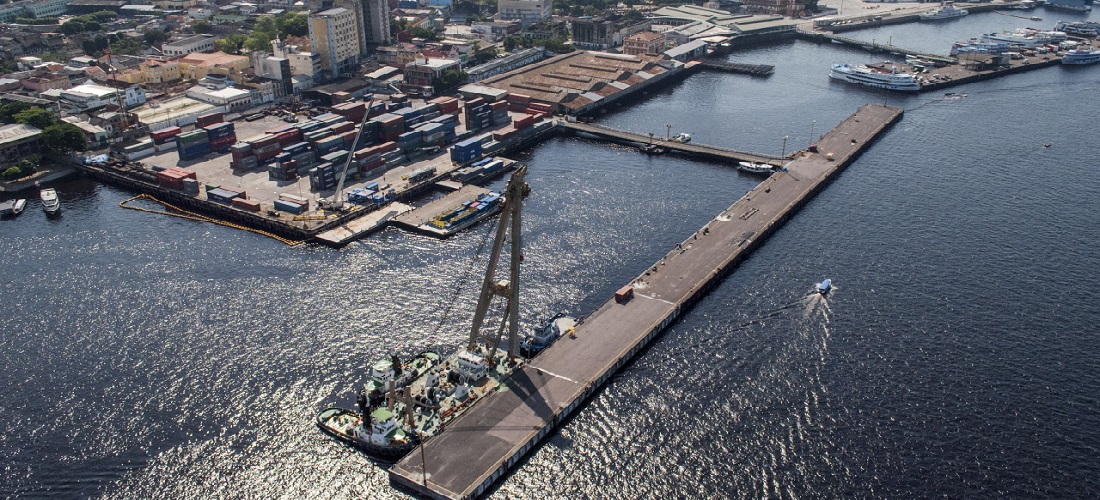
Inland Waterborne Transportation Sets New Record in Brazil’s 3Q23
Nov, 08, 2023 Posted by Gabriel MalheirosWeek 202345
From July to September of this year, waterborne cargo transportation via inland waterways in Brazil reached 33.79 million tonnes, marking a historic record for the third quarter in the country. These figures are from the Waterborne Statistics of the National Agency for Waterway Transportation (ANTAQ).
According to the data, this number represents an almost 6.1% increase compared to the third quarter of 2022, the year with the highest inland waterway throughput on record for the period. In comparison to 2019, which was considered the record year for inland cargo movement up to that point, the figure is 7.6% higher.
The record was driven by the transport of soybeans, containers, and iron ore. In total, 4.1 million tonnes of agricultural commodities were transported, indicating a positive variation of 79.3% compared to the same period of the previous year.
Container transportation reached 2.6 million tonnes through inland waterways, representing a 13.23% increase compared to the previous year’s third quarter. The volume of iron ore transported amounted to 1.7 million tonnes, reflecting a 45.4% increase from July to September 2022.
Petroleum and its derivatives, excluding crude oil, are another notable area. Around 2.5 million tonnes of fuel were transported in the third quarter, representing a 0.85% increase in transported volume over the previous year.
All the months of the quarter showed growth in comparison to those same months in 2022. The quarter’s standout is August, when almost 12 million tonnes were transported, marking a 9.26% growth compared to the same period in 2023. July recorded 12.45 million tonnes transported (+6.9%), and September recorded 9.41 million tonnes (+1.4%).
Once again, the Amazon Hydrographic Region stands out as the main area for inland waterway transportation, with 20.27 million tonnes transported between July and September 2023, indicating a positive variation of 5.6% compared to the same period of the previous year. This hydrographic region was responsible for over half of all the transportation done via inland waterways during this period.
Transport on Amazon-region Rivers
The drought season in the Amazon had a more localized impact on navigation in some rivers. In the third quarter, inland navigation on the Rio Negro showed an 18.3% reduction compared to the third quarter of 2022, affecting the circulation of crude oil (-83%), petroleum derivatives (-23%), and containers (-35%). The most affected routes were those from Manaus to Porto Velho and Manaus to Itacoatiara.
Cabotage using the Rio Negro was also significantly impacted, with a 17.1% reduction in the quarter, driven by drops in the transportation of petroleum derivatives (-74%), which had their logistics severely affected, and cement (-31%).
On the other hand, on the Amazon River Waterway, there was growth in inland navigation (+1.8%) and long-haul inland waterway transportation (+3.7%). However, the impact of the dry season on cabotage using this waterway is evident, with a -12.3% reduction, affecting the transportation of bauxite, which fell by 19.7%.
Despite the dry season, the Madeira River did not experience a reduction in transported volumes in this third quarter. The river’s inland navigation, which saw growth of 5.1% during this period, recorded a 43% increase in total soy transportation. The containers that circulated through the river, on the other hand, experienced a significant decrease (-42%).
Waterways as a Solution
The establishment of waterways, which, to be so named, presupposes the existence of systematic services for dredging, buoying, and signaling, offers medium and long-term solutions to considerably alleviate the problems of drought and dryness in rivers, as observed in recent years and more intensely in the Amazon region in 2023.
This is the perspective of Eduardo Nery, ANTAQ’s General Director, who argues that the consolidation of this mode of transportation will mitigate future impacts of drought, dry spells, and other climatic phenomena in the hydrographic regions.
“We are blessed with a bountiful nature, which has gifted us abundant navigable rivers. However, as we have observed in recent years, these navigable regions are susceptible to the impacts of climate change. In turn, a properly established waterway includes the execution of infrastructure services that provide predictability for navigation. Our Waterway PGO, approved in October by the Ministry of Ports and Airports, presents priority projects for feasibility studies that will underpin future concessions.”
According to Nery, ANTAQ’s plan includes holding the first waterway concession auction, the Madeira River, in 2024.
-
Other Logistics
Dec, 23, 2022
0
Log-In buys Grupo Oliva Pinto for BRL 100 million
-
Grains
Sep, 13, 2021
0
Abiarroz reports rice exports at 114,600 tons in August
-
Ports and Terminals
Sep, 27, 2023
0
New partnership set to revolutionize ship refueling in Brazil’s Itaqui Port
-
Ports and Terminals
May, 05, 2022
0
Pernambuco is now closer to reclaiming the autonomy of the Port of Suape


